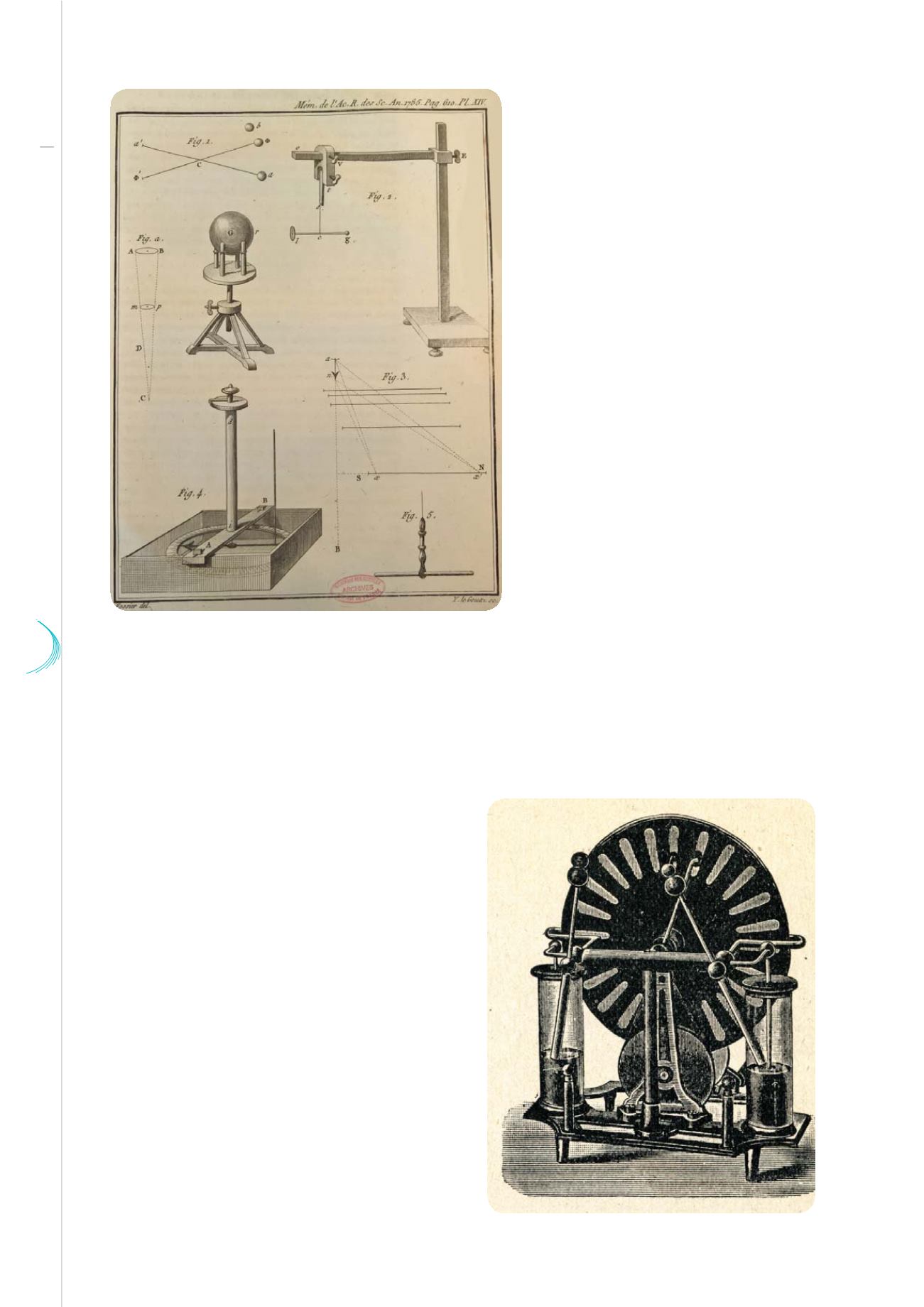

37 38
14
La Lettre
© Archives de l'Académie des sciences
A plate from Charles Coulomb's
First Memoir on Electricity
and Magnetism
(1785)
An electrostatic machine
©Juulijs - Fotolia
It is however customary to mention
progress in science. It is because
they are cumulative that sciences
and technologies progress: to add a
contribution to scientific knowledge, one
must know all the links of the chain made
of what was previously acquired. Let’s
take the example of electricity, which
has now become indispensable in our
daily lives. It was discovered very early
in antiquity. The Greek word “electron”
meant “yellow amber”, which was known
for its electrostatic properties. The next
step tobetter understand itwasonly taken
in the early 18
th
Century with Charles
Du Fay who, in the 1730s, dissociated
two kinds of electricity, depending on
whether it came from rubbing glass
or rubbing amber. Soon afterwards,
Benjamin Franklin called them “positive”
and “negative”. Of the same sign, they
repel each other; of opposite signs, they
attract each other. In 1785, Charles
Coulomb presented a memoir at the Académie
des Sciences explaining the force between two
electric charges. Such a force is proportional to
the charges and inversely proportional to the
square of the distance between them. Then came
the electrostatic machines, made to generate
current, which would bring about the birth of
electric circuits. At the end of the 19
th
Century,
J.J. Thomson demonstrated the existence and
role of the electron, which, a few decades later,
would prove to be one of the elementary particles
that make up our universe. In December 1947,
researchers at the Bell Telephone Company, in
the United States, invented the transistor, which
would be the root of electronics. Then, changing
scales to reduce the dimensions of the transistor
in the early 2000s, would emerge the paradigm


















